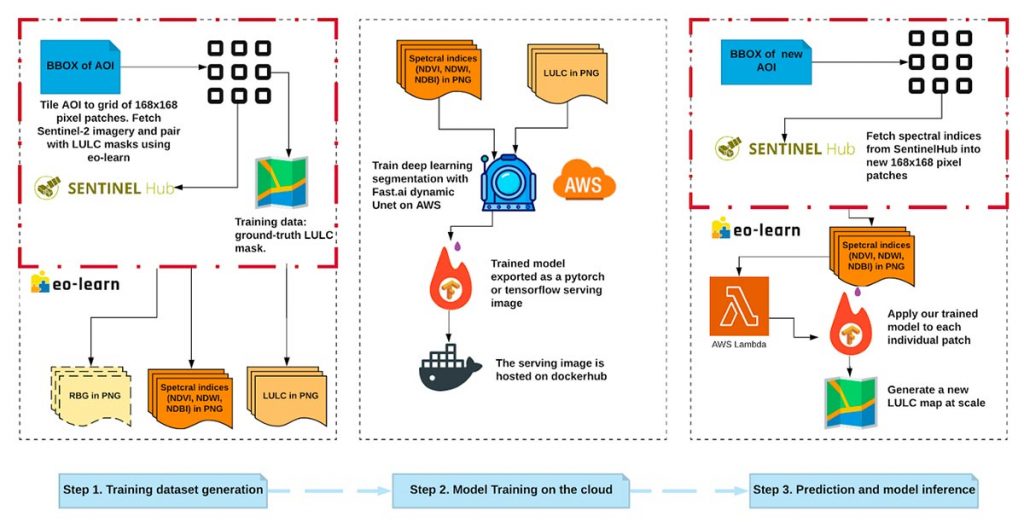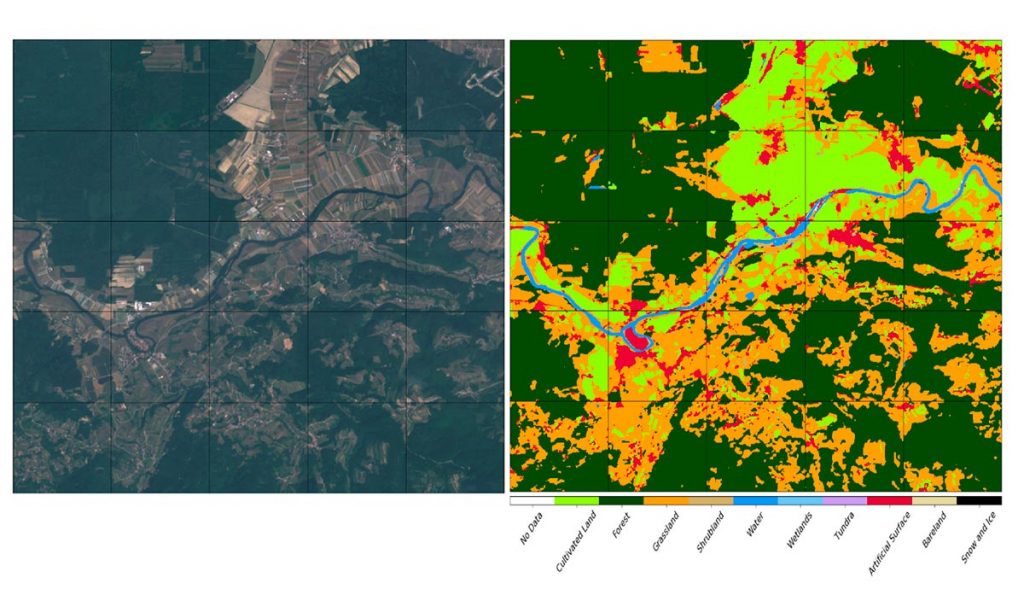
This tool demonstrates a method for rapid classification of Land Use and Land Cover (LULC) on Sentinel data by using Sentinel Hub, eo-learn, fastai and chip-n-scale prediction tools. To enable this workflow, a new utility was built, fastai-serving, that enables the scaling of predictions on the cloud. Tracking changes in land use is essential for understanding urban changes, deforestation and animal habitats. Copernicus Sentinel-2 satellites in particular are useful for this task because of their relatively high revisit rate, resolution and multiple agriculture-focused wavelengths.
A single date land classification approach was designed, achieving very good results and yielding a utility that is easy to quickly run and scale. This approach is often faster and cheaper than alternative approaches that use data from multiple points in time. Multi-temporal approaches can better account for noise and clouds and tend to do much better at distinguishing between certain agricultural and vegetation areas.

However, single observation methods can be valuable for certain applications. Sometimes it is valuable to trade a small amount of accuracy for a much faster and less expensive result. This might be the case when scaling over a very large area, when doing initial exploration and hypothesis testing, or when responding to certain rapid onset disaster situations. Using less data and limited hyperparameter tuning allows for faster iterations while developing a model. Predictions on a single date are also valuable for tracking land use change within a season. Urchn uses regular land use assessments as one input to flag areas where the map may be out of date.
The workflow is optimised for speed and efficiency. It leverages fastai, an ML framework that packages many modern machine practices for easier algorithm development, and uses a pre-trained dynamic U-Net available in fastai to very quickly get the model running.
The pre-trained U-Net is designed for three-channel (RGB) imagery. To accommodate Sentinel-2 imagery, we need to reduce the imagery input from the original thirteen bands without losing too much spectral information. The eo-learn is used to compute three-band combinations (NDVI, NDWI, and NDBI) that carry a good signal for land use and substitute
these in place of the RGB channels. The eo-learn framework also served as the primary data acquisition and transformation framework prior to the data being used in fastai.
Once the model was trained and tested over a sample area, we can use it to predict land use classification over a much larger area. In the case of the experiment, the model was run over all of Slovenia in order to compare with the previous models available for this area. The standard approach for this type of problem is to use chip-n-scale. Chip-n-scale relies on having the model as a TensorFlow Serving Image. In order to convert the model to this format, a new API, fastai-serving, was released for running fastai models with the same API as TensorFlow Serving.

Using the framework, we can run the inference over all of Slovenia (20 000 km2) in under 15 minutes. Because of the inherent variability using a single date, the model is more susceptible to noise or clouds, and has a lower overall accuracy score (85% vs 94% pixels correctly labelled). Still, the time and cost savings are a reasonable trade-off in certain situations.
Share